Ranking the Roger Moore James Bond Movies from Worst to Best
James Bond became a true gentleman spy once Roger Moore assumed the tuxedo. One might even say that... nobody does it better.
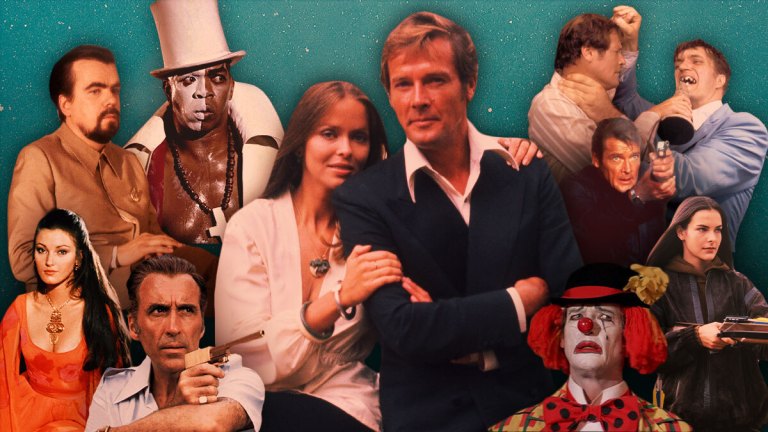
Believe it or not, there once was a time when James Bond movies were fun. And more than fun, Bond himself had fun in them! As difficult as it is to sometimes imagine after Daniel Craig, James Bond was previously a character of high camp and sheepish boarding school humor. And no actor ever better personified that side of Bond than Roger Moore.
Moore was the third actor to portray Bond in Eon Productions’ 007 series, although for many (particularly those who came of age in the ‘70s and ‘80s) he remains the definitive portrayal. With the naturally debonair demeanor, the ease with which he delivers a pun, and ever the boyish twinkle in his eye, Moore was the first Bond who seemed naturally at home in his elite lifestyle. Whereas Sean Connery and George Lazenby could be rough around the edges, suggesting they had to claim their refined place in polite society, Moore looks as if he were born in a tailored suit. And to this day, he remains the only 007 who appears more comfortable with a martini than a gun, and at vanquishing an opponent with a devastating double entendre as opposed to with a fistfight.
Moore truly was the gentleman spy, with an emphasis on gentleman, and his lighter touch ushered in the era where James Bond was at his goofiest, and his adventures were at their most ludicrous. To later generations that’s a detriment, but it was a virtue in its day and with seven Eon films under his belt, Moore remains the Bond with the most canonical adventures on the big screen. Here’s how they’re ranked.
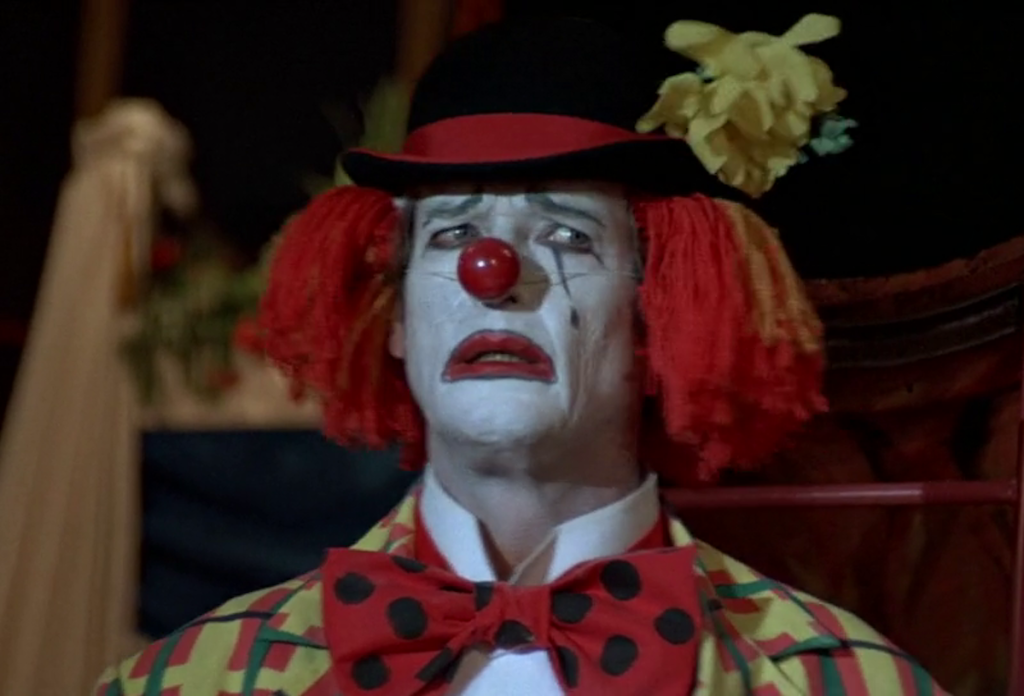
7. Octopussy (1983)
Octopussy begins with James Bond swinging from a vine in the jungle and screaming like Tarzan; it ends with him saving the world while dressed as a clown. That alone should be enough to explain why Octopussy is at the bottom of this list, and perhaps any other sort of James Bond movie ranking.
But if you need more, suffice to say that Octopussy starts at the very beginning promisingly enough, with Moore continuing the Cold War warrior shtick from his previous and superior Bond movie, For Your Eyes Only (1981). Octopussy is immediately daffier with 007 stealing an espionage plane from what is meant to be Communist Cuba and landing it in front of a gas station to ask for a fill-up, but all the way through his late night tryst with Kristina Wayborn as a glorified Circus Du Soleil performer, it has a mild campiness that is harmless… if disposable.
But the further the movie goes into unlocking the schemes of its awful villain (a sleepy Louis Jourdan) and how they intersect with an army of cultural-appropriating acrobats, the worse it gets. Most deadly though is how dull it becomes, and how truly over the hill Moore finally looks in the part at the age of 56. The sad clown makeup didn’t help.
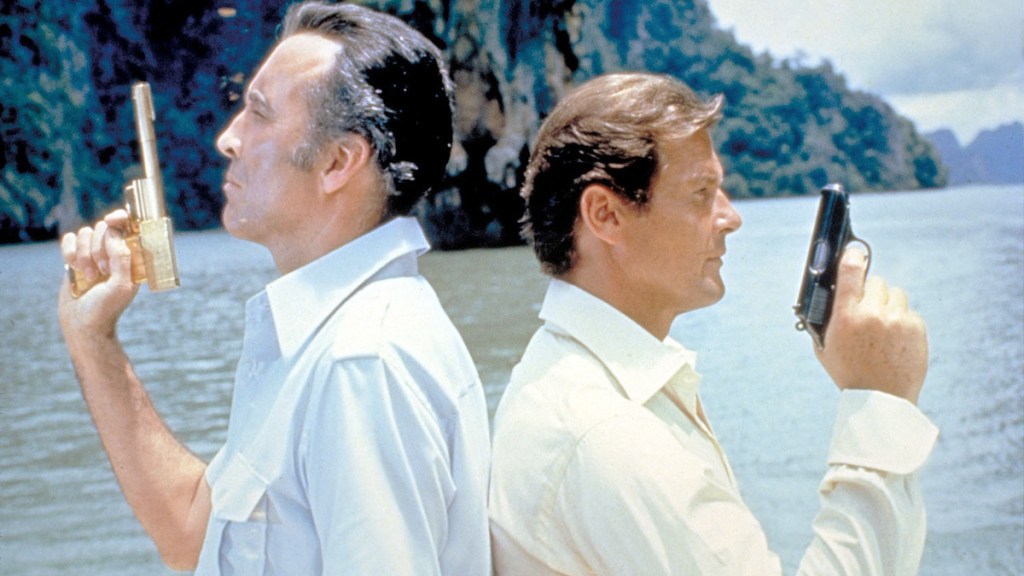
6. The Man with the Golden Gun (1974)
Is The Man with the Golden Gun actually a worse movie than Octopussy? We admit, it’s a bit arbitrary in picking one over the other. But let’s begin with what works about The Man with the Golden Gun. For starters, it’s right there in the title since Sir Christopher Lee and his gilded pistol make for a memorably striking presence. Still in his Dracula heyday, Lee transfers from Hammer Studios a similar regal menace to the Bond series.
Alas, also like his gun, the ostentatious villain only has one bullet in the chamber. Otherwise, the movie (based on Fleming’s final and honestly unfinished novel) makes too much out of the villain’s campier aspects, such as a prosthetic third nipple and Hervé Villechaize as a short of stature henchman whose mocking depiction would inspire the Mini-Me character in Austin Powers many years later.
In the plus column, Moore is much younger and more virile in this one, and is great when he’s allowed to lean into the comedy side of the character. The Bond producers hadn’t quite figured that out, however, depicting 007 at his most chauvinistic and cold toward women in this one, as if hoping to make up for the lack of Sean Connery by upping the caddishness. It doesn’t work, and poor Britt Eland is reduced to playing the ditzy blonde in a bikini via the role of Dr. Goodnight, who was actually one female character that author Ian Fleming wrote with a degree of sympathy over the course of several novels (she’s closer to the onscreen Miss Moneypenny than the Moneypenny of the books).
Nonetheless, there are brief flashes of classic Bond movie ingenuity here: the duel at 10 paces between Moore and Lee, Bond’s escape from a karate school, and a chase that features one of the best stunts in the franchise, with a car doing a 360-degree barrel roll while jumping between two ends of a broken bridge. Such a shame that most people never notice the last bit because the movie adds a tacky sound effect.
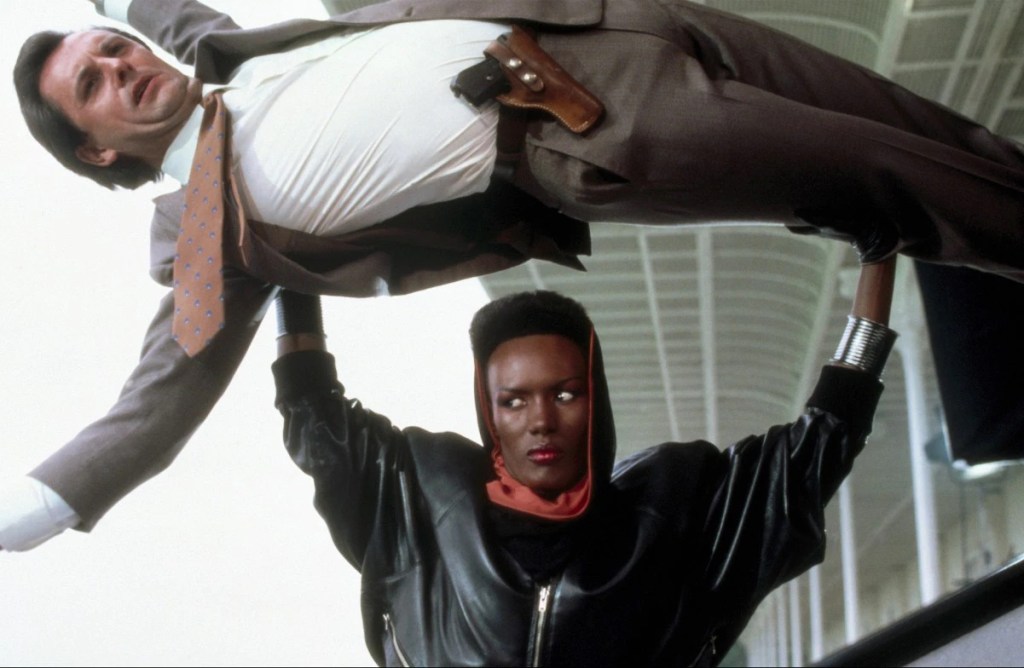
5. A View to a Kill (1985)
Roger Moore’s final James Bond movie begins with him creating a makeshift snowboard out of a snowmobile and escaping gunfire while the Beach Boys’ “California Girls” plays over his halfpipe tricks. So yeah, by Moore’s seventh go, the Bond producers knew what kind of self-parody the franchise had become, as well as just how tired Moore looked. But you know what? As objectively bad as A View to a Kill is, the movie is intermittently entertaining.
Christopher Walken deserves a lot of credit for that. With wide and suspiciously dilated bug eyes, and a perfectly authentic Yuppie sneer, Walken is an ideal baddie for the mid-1980s. Do you believe he is a Russian super agent who was raised in a Soviet lab? Absolutely not, but Walken knew exactly what kind of movie he was in and tapped into Patrick Bateman energy several years before Brett Easton Ellis wrote American Psycho. Also, his recycled Goldfinger plot, in which Walken’s Max Zorin seeks to corner the microchip market by flooding Silicon Valley, vaguely sounds like an act of heroism some 35-plus years later.
His henchwoman Mayday (Grace Jones) is also one for the ages: a fashion forward, androgynous model who seems like she could break the nearly 60-year-old Moore in half when she accepts him into her bed. The movie is tacky and wacky, but it knows it, and Moore seems as comfortable in the role as a college dad revisiting his old alma mater. Ironically, the best scenes are between Moore and Patrick Macnee, a pair of spies who are undercover as a gentleman of leisure and his put-upon valet. We could have had a whole movie of that. The only shame is Barbara Bach declined coming back as the great flame of the Moore Bond’s life.
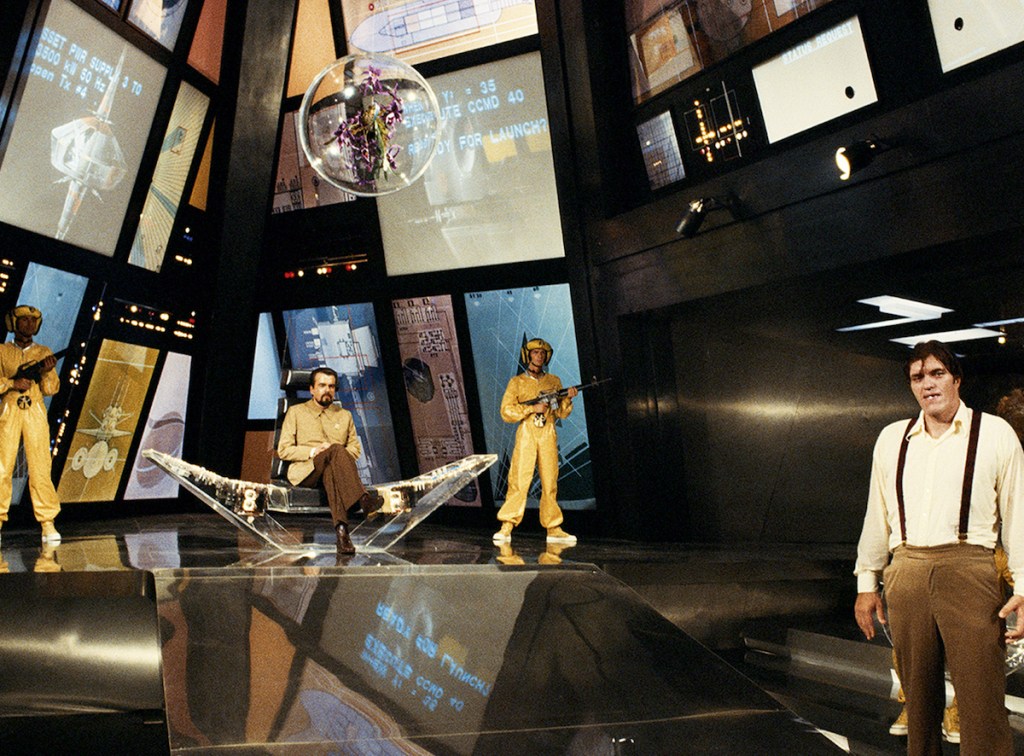
4. Moonraker (1979)
When The Spy Who Loved Me came out in 1977, it was two years removed from Steven Spielberg’s game-changing Jaws. So what did Cubby Broccoli name the henchman in the next 007 flick? Jaws, of course. And yet, during the same summer TSWLM saved the Bond franchise, a little movie called Star Wars made a whole lot more money. So what to do, what to do? Maybe… James Bond… in space?!
Based on the second Fleming novel in which screenwriter Christopher Wood took the title and not much else, Moonraker is the prime example of the Bond franchise at its most decadent: a blatant me-too knockoff of another popular trend filled with a nonsensical plot wherein a supervillain wishes to destroy all human life on earth so he can raise a new generation of Aryans on a space station and then repopulate the planet. It’s so, so dumb, and for some that makes it the epitome of everything wrong with the Moore era. After all, even the returning Jaws (Richard Kiel) went from being vaguely scary in the previous TSWLM to Elmer Fudd, always getting outsmarted by that darn 007! At one point, he even goes over a waterfall while chasing Bond (don’t worry, physics don’t matter here).
Still, we’re kind of charmed by Moonraker in stretches. Moore is still in peak form as the dryly bemused schoolboy who never grew up, and some of the gags succeed. The opening sequence is a banger in which Moore’s stuntman is thrown out of a plane without a parachute and must steal one from Jaws’ similarly descending henchman. It’s terrific. The waterfall scene is fun. And you know what? Bond in space is just the right kind of stupid, and far more amusing than the generally better regarded You Only Live Twice (1967), which also reaches toward the cartoonish. Finally, Michael Lonsdale makes for a superbly dry megalomaniac who in a different movie might’ve been horrifying (his murder of Corinne Cléry is pretty disturbing and feels like it’s from a different movie). It’s a bloated mess, but there’s gold buried in the debris.
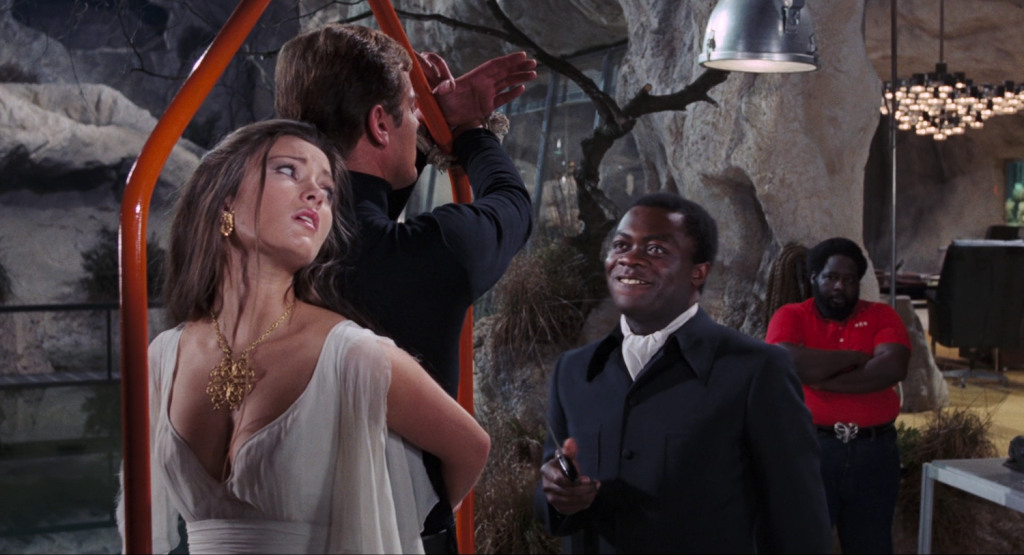
3. Live and Let Die (1973)
Roger Moore’s first James Bond movie is one that’s aged… strangely. On the one hand, it’s celebrated to this day for that bopping Paul McCartney and Wings jam which some of us consider the greatest Bond song ever written; on the other it’s an attempt to appeal to Black viewers and blaxploitation trends by… depicting every Black person in Harlem and New Orleans as part of a heroin drug ring that sacrifices white women for Voodoo power on the side. It’s troubling. To put it mildly.
The movie is undoubtedly problematic, but it’s not without some virtue. While Moore’s humorous and droll 007 is not fully formed here, Moore is still commandingly comfortable in the role—and honestly better in the action sequences than he’d be down the road. The on-location photography in New York and New Orleans in the early ‘70s is also a time capsule, just as the film is for satisfying in-camera action sequences, like the bit where someone really does the stunt of Bond running across the snapping heads of alligators and crocodiles. The bit where Bond steals a speedboat on the Mississippi is also thrillingly filmed (if too lightly edited).
The film likewise remains a bit of a cult classic because of its supporting cast. Despite the uncomfortable and racist connotations that the Bond producers didn’t fully grasp, Geoffrey Holder’s zombie/voodoo priest Baron Samedi remains one of the series’ best secondary baddies while Yaphet Kotto is, as always, compelling as the main villain Mr. Big (if only he had more to do).
There’s also an air of real tragedy to Jane Seymour’s fragile Solitaire. A clairvoyant whose powers are linked to her virginity, Bond’s manipulative seduction of the young woman, done to gain information at the callous sacrifice of her gifts, paints 007 as a real bastard in how he treats women for the first time in the series. In a different era, producers might’ve even realized this was really Solitaire’s story as opposed to Bond’s.
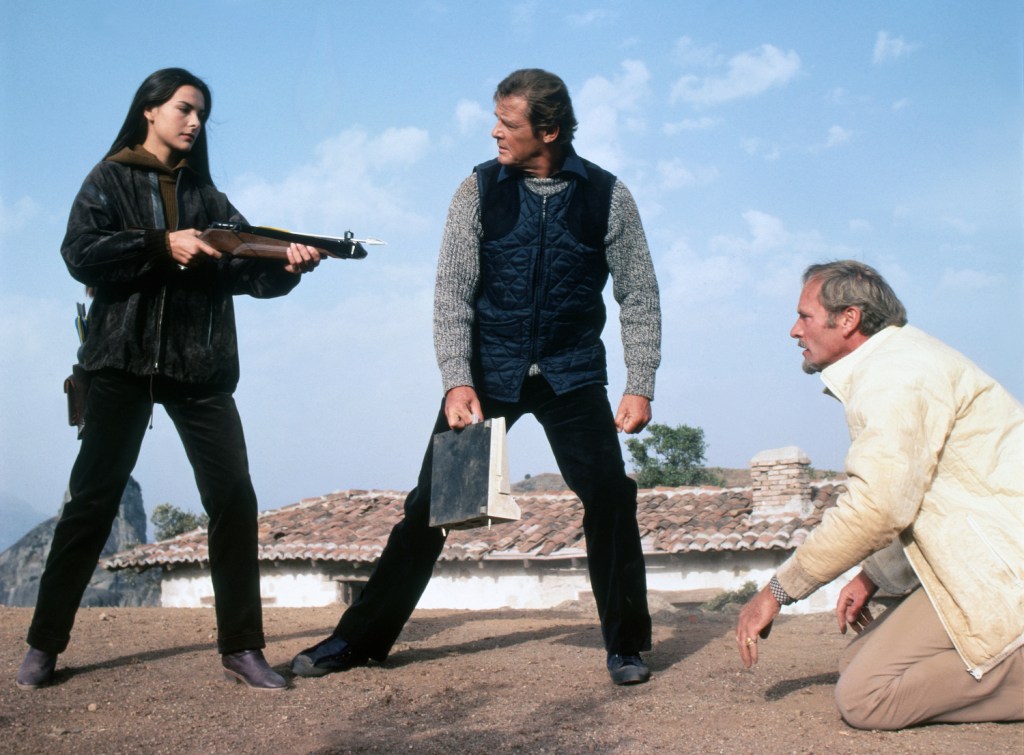
2. For Your Eyes Only (1981)
Hangovers are sometimes a necessary evil: they teach humility and limitations. The Bond franchise has displayed this in cinematic form several times. After the excesses of You Only Live Twice, we got the underrated and wonderful On Her Majesty’s Secret Service (1969). And following the bombastic trifles of Moonraker, Moore made his second best installment in the role, For Your Eyes Only.
This back-to-basics approach mostly throws out gadgets and cartoon plotting for a simple Cold War espionage yarn: a British vessel has sunk off the coast of Greece; it holds a coding machine the Soviets want, and 007 is sent in to retrieve it while both the Russian and British agents are manipulated into a local dispute among crime syndicates. Moore was never more brutal than when he exacts revenge for the murder of several friends by kicking a henchman’s teetering car over a cliff; and none of his movies’ climaxes had better stakes than when FYEO stole a page from The Guns of Navarone (1961) for a thrilling standoff along the cliffside of a Greco monastery in which stuntman Rick Sylvester (the same man who famously skied off a glacier in TSWLM) does controlled free falls off the side of a mountain.
The movie also features one of the best Bond Women of the Moore era, Melina Havelock (Carole Bouquet), a Greek-English daughter who seeks revenge for her parents’ murder. There’s a dynamic sequence where she and Bond are dragged by speedboat through a coral reef, attracting sharks. It’s a shame though that Bond wouldn’t let her kill the bad guy at the end. Still, the strangely fraternal relationship Bond has with his Soviet counterpoints was perhaps the most realpolitik the franchise ever got.
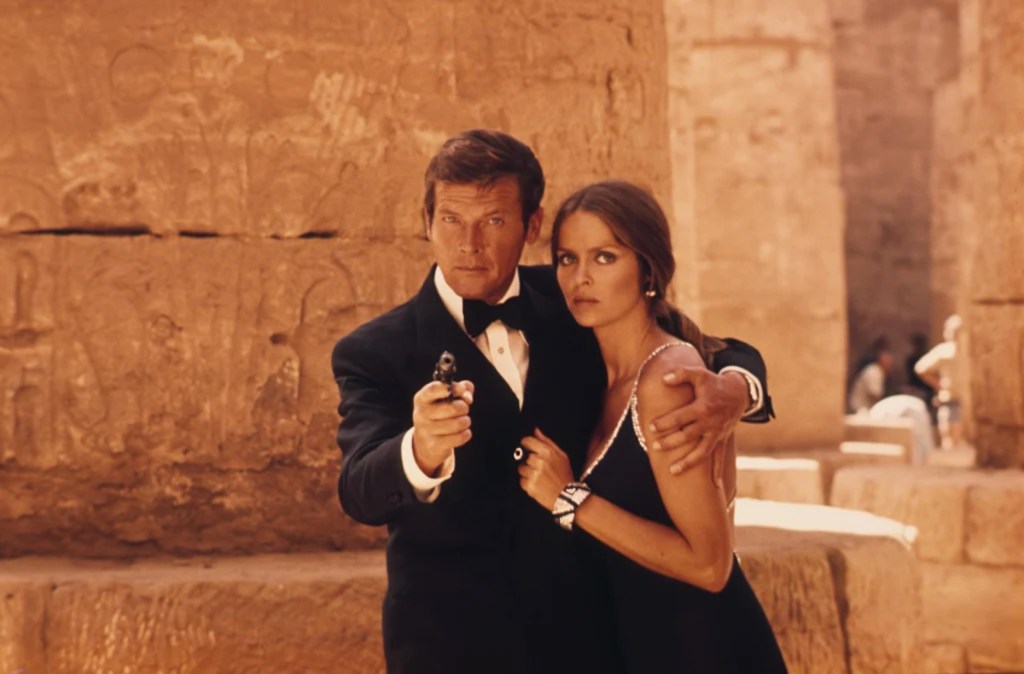
1. The Spy Who Loved Me (1977)
Carly Simon wasn’t kidding when she belted, “Baby you’re the best!” Like Goldfinger in the Connery era, The Spy Who Loved Me was the Bond film where everything clicked into place perfectly for Moore. It also wasn’t a moment too soon since this 10th 007 adventure also marked the first one without Harry Saltzman as a producer. And while Moore had been accepted by the public as the new James Bond, he hadn’t been enthusiastically embraced at the box office. So a lot was riding on TSWLM before it opened.
As much an endearingly silly mid-‘70s rom-com as it is an espionage actioner, The Spy Who Loved Me is about a rivalry between a British agent (Bond) and his Soviet rival (Barbara Bach’s Maj. Anya Amasova). Both are deployed to Egypt to recover a microfilm that leads to an admittedly dull megalomaniac with dreams of world domination. The point is look how cute these two are while battling Richard Kiel’s Jaws at the Temple of Karnak; or watch them squabble over a MacGuffin in a car that breaks down anyway, forcing them to hoof it in the desert while dressed in evening wear and as Lawrence of Arabia music plays; they even break up at the end of the second act because of the whole “turns out he killed her ex-fiancé” thing. Who hasn’t been there?
The movie also features some of the most spectacular action beats in the Bond canon, including Rick Sylvester’s iconic ski ride off a glacier that culminates with a Union Jack parachute, and just about anything involving Jaws’ gleaming metal teeth. Even the gadgets are top notch with Moore’s Lotus Esprit turning into a little submarine, perfect for underwater espionage and spooking the tourists on the beach. Like the song says, nobody does it better.
